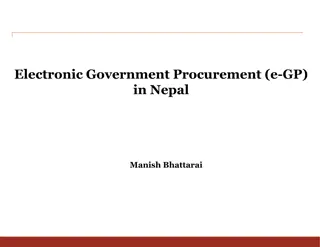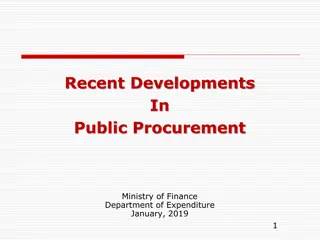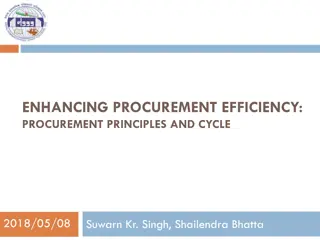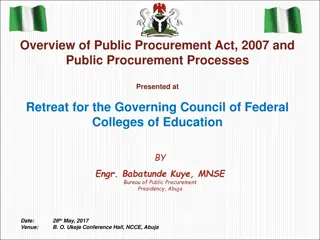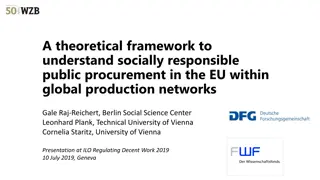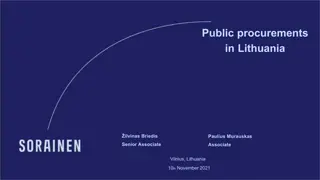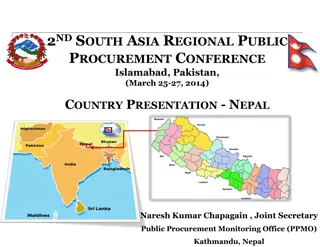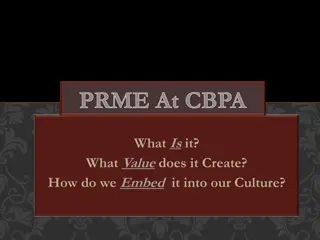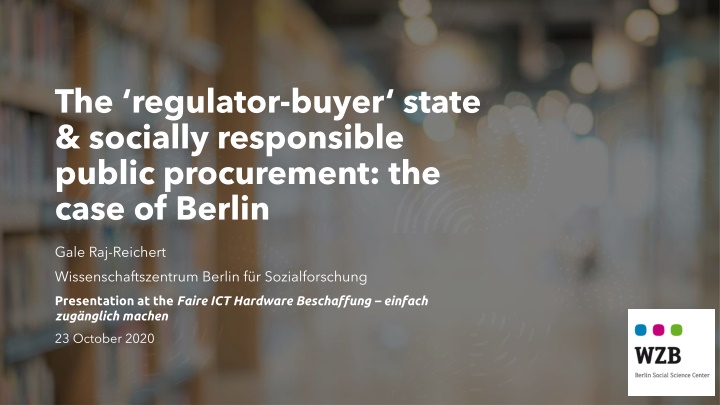
The Regulator-Buyer State & Socially Responsible Public Procurement in Berlin
This presentation explores the concept of the regulator-buyer state and socially responsible public procurement (SRPP) in Berlin, highlighting the roles, powers, and considerations involved. It discusses the multi-scalar aspects, challenges, and the impact of public procurement expenditure at different government levels in EU Member States. The focus is on contracts, buyers, and the revised public procurement law in Berlin.
Download Presentation

Please find below an Image/Link to download the presentation.
The content on the website is provided AS IS for your information and personal use only. It may not be sold, licensed, or shared on other websites without obtaining consent from the author. If you encounter any issues during the download, it is possible that the publisher has removed the file from their server.
You are allowed to download the files provided on this website for personal or commercial use, subject to the condition that they are used lawfully. All files are the property of their respective owners.
The content on the website is provided AS IS for your information and personal use only. It may not be sold, licensed, or shared on other websites without obtaining consent from the author.
E N D
Presentation Transcript
The regulator-buyer state & socially responsible public procurement: the case of Berlin Gale Raj-Reichert Wissenschaftszentrum Berlin f r Sozialforschung Presentation at the Faire ICT Hardware Beschaffung einfach zug nglich machen 23 October 2020
Regulator-buyer state Exercising SRPP involves functions of the regulator and buyer role as a hybrid ( regulator-buyer state) The ability to make change vary at different scales of government (national versus sub-national & local) Regulator power: legislative, institutional, judicial and discursive instruments (they are interactive) Buyer power: purchasing volume which depends on market availability and industry reach (they are inter-dependent)
Multi-scalar considerations Slow/ bureaucratic progress Larger purchasing contracts Central Region/ County Smaller contracts; fragmented purchasing Progressive, politics; quick responses; stronger SRPP? City/ Municipality
Public Procurement expenditure by central and sub-central scales of government across EU Member States by % of GDP in 2018. Source: Eurostat (2020).
Contracts by type of public buyer (2017, in %). Source: TED (2020) Contracts by type of public buyer (in %) 100% 90% 80% 70% 60% 50% 40% 30% 20% 10% 0% EU-28 AT DE FR NL SE UK Central State (Ministry, national/federal authority) Regional/local authority Water, energy, transport and telecommunications sectors European Union institution/agency Other international organisation Body governed by public law Other National or federal Agency/Office Regional or local Agency/Office Not specified
Contracts, by type of buyer, selected product categories and member states (2017, in %) . Source: TED 2020 CPV 18: Electronics CPV 30, 32: Clothing
Revised public procurement law of Berlin (BerlAVG) Over 50% of public procurement in Germany is done by municipalities City of Berlin spends up to 5 Billion Euros per year on public procurement Public procurement is done across 12 burroughs/districts Berlin buys 80,000 computers per year; 500,000 bananas for schools per month
(legislative) BerlAVGstronger Fair-trade standards in award criteria Stronger sanctions for violations, e.g. price reduction, exclusion List of products & production countries violating ILO CLS Companies must show compliance, e.g. labels and certificates (institutional) Challenges and opportunities Lack experience & training; no dedicated staff for SRPP; limited financial resources; competing interests; small control group Fair Procurement personnel (SKEW); pilot projects -- temporary, should be made permanent & scaled up CSO pressure, dialogue, and cooperation e.g. FAIRgabe B ndnis (discursive) Fair Trade Town, Green Party s socio-ecological transformation post Covid-19 REGULATOR ROLE
(procurement volume) BerlAVG applies above thresholds (10K; 50K for construction) Below threshold contracts can have stronger SRPP criteria Fragmented purchasing power across districts Overcome through pooled and centralised purchasing; also purchasing templates BUYER ROLE (market availability) Can waive ILO CLS if no bidders

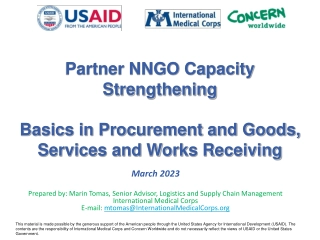
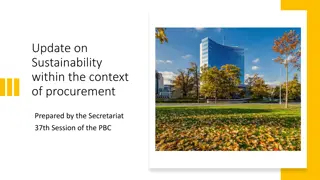


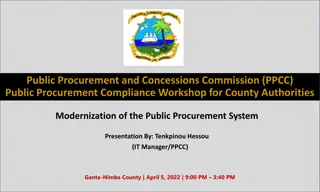
![Comprehensive Overview of Corruption Watch Submission on Public Procurement Bill [B18B-2023]](/thumb/138344/comprehensive-overview-of-corruption-watch-submission-on-public-procurement-bill-b18b-2023.jpg)

